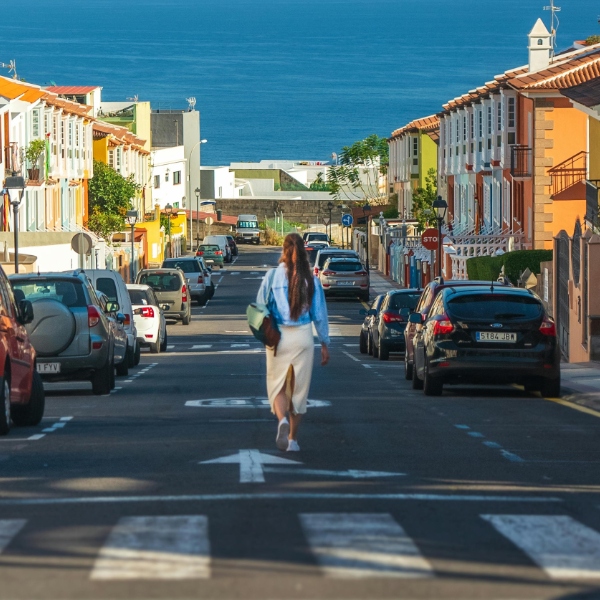Most Common Tourist Traps In Asia. Avoid These Tourist Traps on Your Next Asian Adventure! Don’t Get Scammed: Top Tourist Traps to Watch Out for in Asia. Discover Asia’s Biggest Tourist Traps and How to Avoid Them.
This site contains affiliate links. For more info, please see our full disclosure.
Traveling through Asia offers an incredible mix of vibrant cultures, stunning landscapes, and delicious cuisine.
However, like any popular destination, Asia has its share of tourist traps that can turn your dream vacation into a frustrating experience. By knowing what to look out for and how to prepare, you can avoid these pitfalls and make the most of your trip.
Visiting popular tourist areas is all part of the adventure—after all, you’re a tourist eager to explore! But just because you’re hitting the hotspots doesn’t mean you have to fall into the common tourist traps. Embrace the popular sites, but explore with curiosity and an eye for the unexpected. This way, you’ll truly get the best of both worlds!
Signs of a Tourist Trap
- Pushy Salespeople: If someone is overly eager to sell you something, it’s likely a trap.
- Too Good to Be True: Deals that seem unbelievable usually are.
- Lack of Locals: If you don’t see any locals around, it’s probably a place set up for tourists.
- High Prices with Low Quality: If the prices are high but the quality doesn’t match, it’s likely a tourist trap.
How to Prepare and Protect Yourself
- Research in Advance: Before you go, read up on the common scams in the areas you’ll be visiting. Knowing what to expect is your first line of defense.
- Keep Important Contacts: Make a list of emergency contacts, including your country’s embassy or consulate, and save them on your phone.
- Learn Basic Local Phrases: Even a few words in the local language can help you navigate situations and avoid scams.
- Stay Aware of Your Surroundings: Be mindful of your belongings, especially in crowded areas. Use anti-theft bags and don’t flash valuables.
Here’s how to navigate Asia’s tourist traps with confidence.
Most Common Tourist Traps In Asia
- Fake Gem Scams (Thailand)
- What to Watch For: Friendly locals or tuk-tuk drivers offering to take you to a “special” gem store with incredible deals.
- How to Avoid: Politely decline any unsolicited offers for shopping trips. Stick to reputable jewelers if you plan to buy gems.
- Tea House Scams (China)
- What to Watch For: Someone approaches you and invites you to a traditional tea ceremony, but you end up with an exorbitant bill.
- How to Avoid: Avoid accepting invitations from strangers – in general. If you want to experience a tea ceremony, visit a well-known tea house, or when you arrive at the airport or your hotel, ask for recommendations.
- Taxi and Tuk-Tuk Overcharges (Various Countries)
- What to Watch For: Drivers refusing to use the meter, taking unnecessarily long routes, or offering a “fixed” price that’s much higher than normal. if you are going places, check around for other transportation means. If you want to experience the ride, ensure that things are discussed clearly including costs and time. Record the conversation if necessary.
- How to Avoid: Insist on using the meter or agree on a fare before starting your journey. Use ride-hailing apps like Grab or Gojek where available.
- Overpriced Souvenirs (Throughout Asia)
- What to Watch For: Stalls near popular tourist sites selling mass-produced items at inflated prices.
- How to Avoid: Visit local markets or shops away from tourist areas. Haggle respectfully but be aware of the local customs regarding bargaining.
- Fake Monks Asking for Donations (Thailand, Cambodia)
- What to Watch For: Men dressed as monks asking for money or selling bracelets.
- How to Avoid: Real monks do not ask for money. Politely decline and keep walking.
- “Special” Tours (India and the rest of Asia)
- What to Watch For: A local offers to take you on a tour of lesser-known attractions, but you end up visiting their friend’s shops instead. DO NOT ride to accept to be driven anywhere without a legitimate plan or documentation.
- How to Avoid: Book tours through reputable agencies or use official guides. Do your research beforehand.
- Overpriced Food (Popular Tourist Spots)
- What to Watch For: Restaurants near famous landmarks with inflated prices and mediocre food.
- How to Avoid: Look for places where locals eat, or use apps like TripAdvisor to find authentic dining options.
- Currency Exchange Scams (Throughout Asia)
- What to Watch For: Exchange booths with poor rates or hidden fees, especially in tourist-heavy areas. Also, if you can use mostly credit cards, do it. This way you have a record of transactions instead of doing all cash.
- How to Avoid: Use ATMs or exchange money at a bank. Avoid exchanging currency at airports or near popular attractions.
- Faux Tour Guides (Indonesia, Vietnam)
- What to Watch For: People posing as official guides, offering to show you around, and then demanding high fees.
- How to Avoid: Hire guides through your hotel or reputable tour companies. Always ask to see a guide’s credentials. Book tours from reputable providers and read reviews. GetYourGuide is a great resource.
- Sketchy Massage Parlors (Thailand, Vietnam)
- What to Watch For: Cheap massage parlors that offer more than just a massage, often leading to uncomfortable situations or scams.
- How to Avoid: Choose reputable spas or massage parlors. Check reviews online or ask for recommendations from your hotel.
Areas to Avoid (Most Common Tourist Traps In Asia)
- Overly Touristy Zones: These areas often have overpriced everything and are magnets for pickpockets. If possible, explore less touristy neighborhoods. If you really want to go, ensure that you are well-equipped especially if you are traveling alone.
- Known Scam Hotspots: Do some research to identify areas in the city that are notorious for scams and avoid them, especially if you’re alone or it’s late.
- Unfamiliar Remote Areas: Stick to well-traveled paths, especially if you’re unfamiliar with the region or the local language. Work with a well-reviewed and trusted travel guide service to ensure you can explore safely.
Reaching Authorities and Getting Help
- Know the Local Emergency Number: In many Asian countries, the emergency number is 112, similar to Europe. In China, it’s 110, and in India, it’s 100.
- Locate Your Embassy or Consulate: Make sure you have the address and contact details of your country’s embassy or consulate in the cities you’re visiting.
- Download Local Apps: Some cities have apps that allow you to report scams or get help quickly. Check the app stores before your trip.
- Note Where The Hospitals And Police Stations Are. Food poisoning from street foods is more common than you think and Asia is known for street foods. If you have sensitivities and health issues, knowing where the closest hospital is will help you book your accommodation in a closer proximity. Call your travel insurance ahead of time to ensure that you are covered for possibilities. Ask the insurance representative how you’ll manage and what the process is for when you are in need of medical attention.
What You Really Need To Know : Most Common Tourist Traps In Asia
When traveling through Asia, it’s important to be aware of the most common tourist traps and scams. From overpriced jet ski rentals in Thailand to staged tea ceremonies in China, these traps are designed to target tourists. Beware of taxi drivers who might take you on longer routes or insist on not using a meter. Many of these common scams are easy to avoid if you do a little research beforehand and stay alert during your trip.
Check local travel forums, read about specific traps, and be cautious with tours that seem too good to be true. By being mindful of your surroundings, you can protect your money and enjoy your travels without falling for these tricks. Remember to always confirm prices and terms before agreeing to anything. Traveling smart helps you avoid frustration and makes your trip far more enjoyable.
By staying informed and alert, you can avoid common tourist traps and enjoy a more authentic and stress-free experience in Asia. Embrace the local culture, step off the beaten path, and have a trip to remember!








